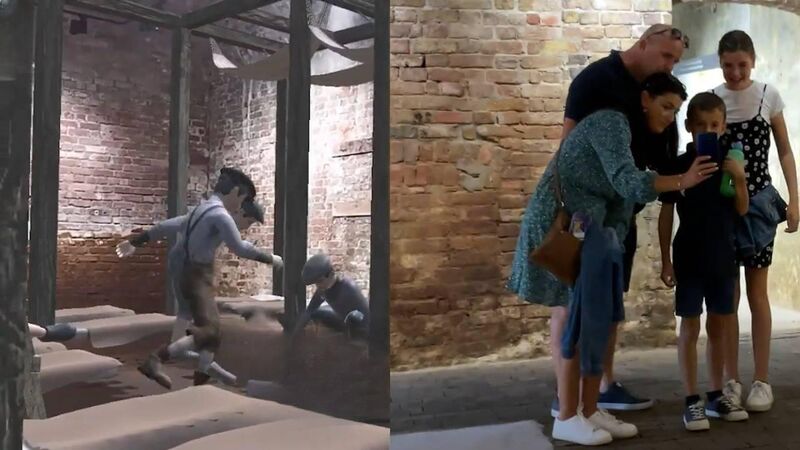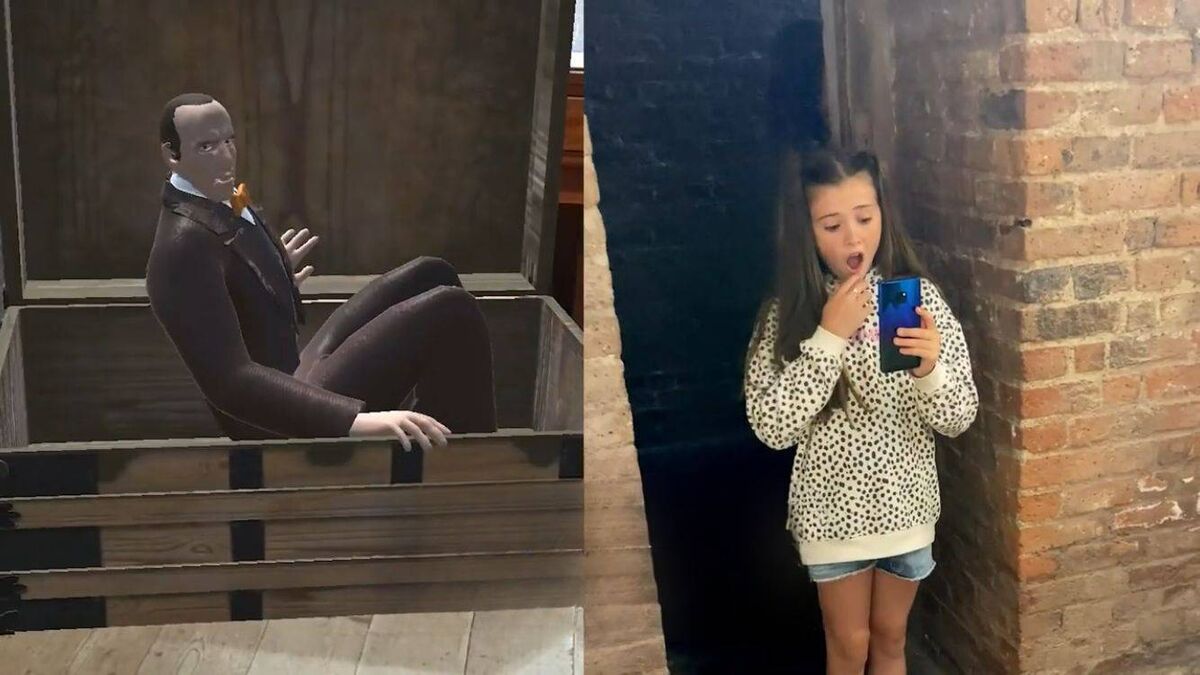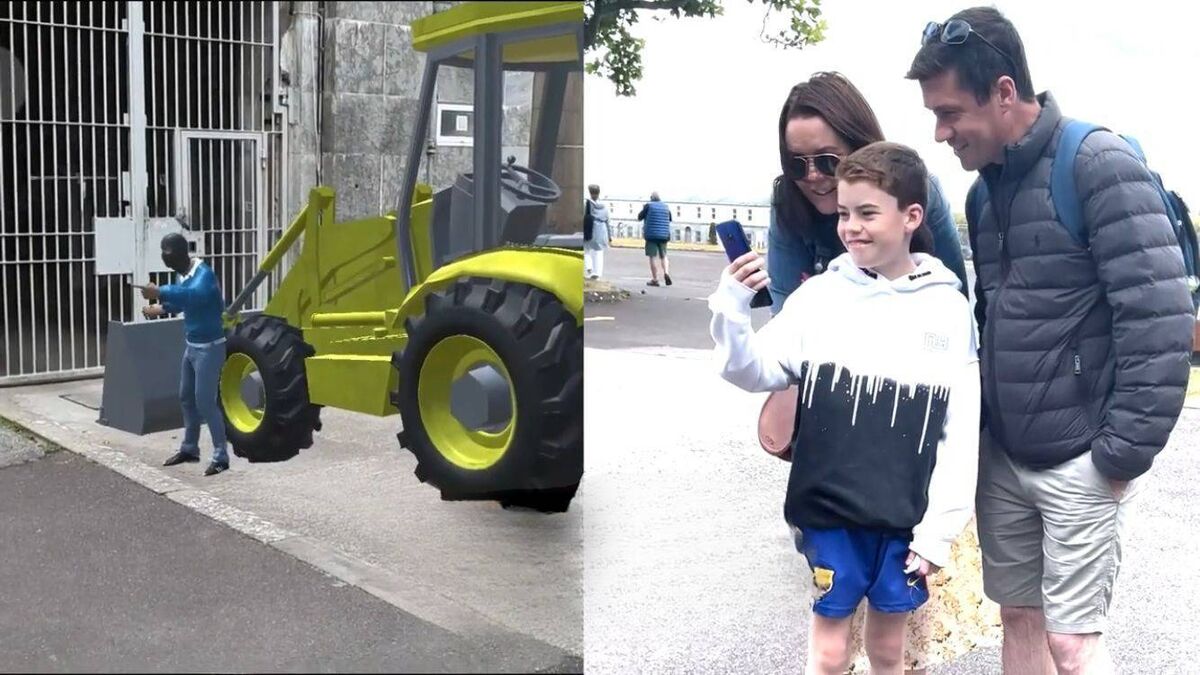A new app brings Spike Island's long and storied history to life on your smartphone

An animated child prisoner interacts with the real-life surroundings of Spike Island in a new app
At a time when history’s impact on Ireland’s present is in sharp relief amid a decade of centenaries, one enterprising group has worked on placing the history of Cork’s Spike Island, and the people that have recorded it, in a new light.
Augmented-reality developers Imvizar have worked with the Spike Island committee to photograph and map the island, and use 3D animation to bring some of its historic characters and stories to life - in a newly-launched smartphone app that uses your camera to mix animation with the surroundings in real-time.
“It's very imposing, when you get to the top of the hill, you don't quite realize what's behind those walls,” says CEO Michael Guerin. “As I started to learn more and more about it, and as I set up this company, I realized that Spike really was one of the best places to tell a story in a visual and interactive way.
“It goes as far back as 600 AD when they believe there was a monastery on the island, all the way through to Eamon DeValera and Winston Churchill having a bit of a barney as to whether the land should be handed back to Ireland in 1930 or not, as part of the Treaty Ports. You'll see famine prisoners in the punishment blocks, up as far as the rioters in 1984.
“It's 1300 years of history we're covering in a 15-stop tour, and the big thing for us is that this is a new medium - it will not replace audio or guided tours. It's a way of engaging with digital natives - those who expect a level of interactivity.”
There has to be tremendous physical considerations in creating an experience like this in a setting like Spike Island - setting waypoints around the facility’s guided tour to allow users to view different sequences and animations, while respecting the historic surroundings and allowing users’ attention to revert to in-person tour guides.
Producer Adele Keane speaks about the app’s development: "I worked with a really talented team of 3D designers, artists, animators - feeding them the content, and briefing them on art ideas in our direction. What was really unique about this project is that Spike Island was our stage.
“There was a lot of trial and error, figuring out what way works best to to bring the story to life, and to add to the location of Spike. I think we did quite a good job of finding places, because there's quite a lot of concrete blocks and buildings, where there's so much history that happened, but people don't see that. So instead of people having to go and read, 'oh, there apparently used to be a children's prison here', they can now hold up their phone, and use that as their lens to look into the past.
"The most rewarding thing was going and getting users to test it - once we put it into the hands of the public, it was amazing. We had people laugh, people cry, people being scared, because we have such a great mix of scenes. We had a lot of kids who, when they held up their phone up, they jumped and got a fright, and that was quite amazing to see.
“For the historians, and people who really love history, they were quite fascinated to see DeValera and Churchill come to life and how accurate we got their appearance, the way they speak, the way they move. It's really, really nuanced."

Further bringing the history of Spike Island to life is Marie Toft, a former RTÉ news journalist who now works in the AR sector, who helped cast the voices of historic and representative figures, bringing together comprehensive research and first-hand accounts of life on the island to help the team realise the idea.
“When it came to characters like DeValera and Churchill, that was really interesting, because you have to be so careful, because you're creating words for them, and you have to be historically accurate - for Dev, we'd look back through Dáil speeches to be able to put something together that strikes the balance of emotion and accuracy.
“The child prisoner was based on a real prisoner, Timothy Sheehan. We looked back over the records of the children who were inside. I just put myself in the shoes of a 13-year-old boy, landing on an island, not knowing anyone and the other boys telling you, 'you're on your way to Australia'. [Realising that emotional idea] was wonderful.”

It’s an ambitious project, and one that the Imvizar team hopes to replicate at other tourist attractions the world over, providing their app as the single access point for them all. But at the heart of all the technology and modernity lies the capacity to expand upon historic stories and accounts, which has already made an impact, according to Guerin.
“One of the most memorable responses for me was on my first testing visit, we gave two ladies an opportunity to see the punishment block, and the prisoner who's chained to the wall and blindfolded, who was chained over 23 and a half hours per day. One lady started to cry, and said that she had never really considered the human aspect of Spike Island - she walked in and out of all the cells, the damp, smelly cells, but had never thought about the humans that were there.”
- For more information about the Spike Island experience visit: spikeislandcork.ie






